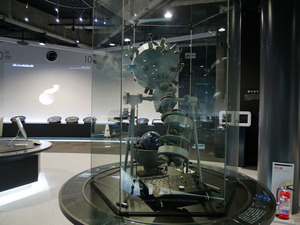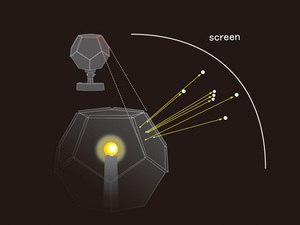Nagoya City Science Museum
TOP > Exhibition Guide > Keyword Search > Starting with "P" > pinhole > Pinhole Planetariums
Pinhole Planetariums



Purpose of Exhibition
Pinhole planetariums are made of simple mechanisms without lenses. A star ball is a polyhedron or sphere with many pin holes; a bulb glows inside it so that light passes through the holes to project points of light onto a screen. They indeed cannot produce the sharp images like large dome planetariums, much less like actual stars in the sky, but they are so quick and easy to use that school planetariums and homemade kits often adopt pinhole projectors.
Additional Knowledge
[How to Produce Pretty Stars with a Pinhole Projector]
The mechanism of a pinhole planetarium is simple, but on the other hand, it requires further efforts and care if you want to cast a beautiful image of stars. The stars projected are, in fact, the image of the light bulb. If you look closely at any of the star points on the screen, you would find the filament of the bulb there.
For this reason, professional grade products often mount the specialized bulb with a tiny filament for planetariums. It is generally difficult to obtain and requires a dedicated power supply, so is not suitable for making your own projector. Now, let’s try another way.
Incandescent light bulbs are a good choice for a pinhole planetarium light source. This is because the light from an incandescent bulb spreads out in all directions and passes through holes in various locations uniformly. In contrast, LED light is generally directional, and as a result, only a certain area gets brighter, giving a mottled projection. So, LED is not appropriate for projecting the whole sky in pinhole planetariums.
The size of the bulb is also important. Miniature bulbs are so large that we will see a shape of the filament on stars. We need to choose smaller and brighter bulbs. Among those readily available today, the tiny bulbs in compact flashlights, such as the MAG-LITE, are well suited. It is much smaller than a miniature bulb, and thus produces much smaller images of stars. Another advantage is that we don’t need to bother with a power source, once we have removed the lens, shade, housing, and other parts of a flashlight.
This page was last edited on 6 July 2022.
Article by Astronomy Section
